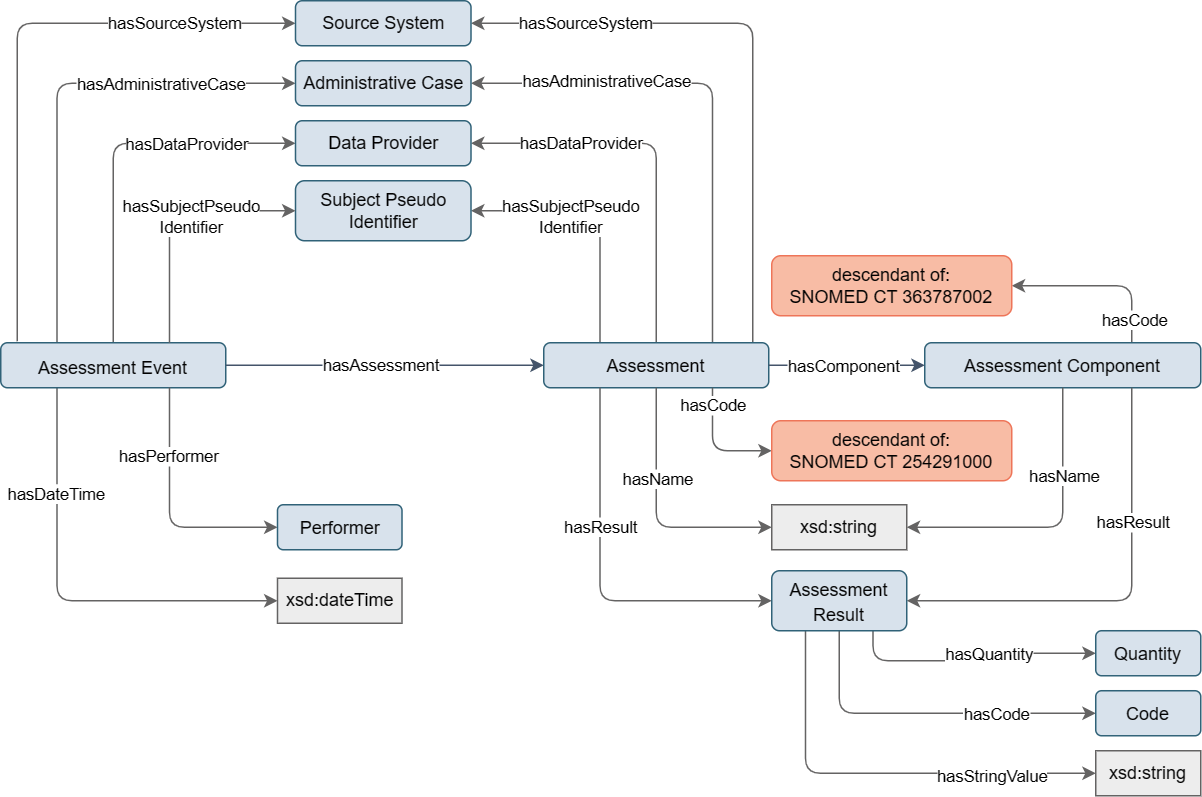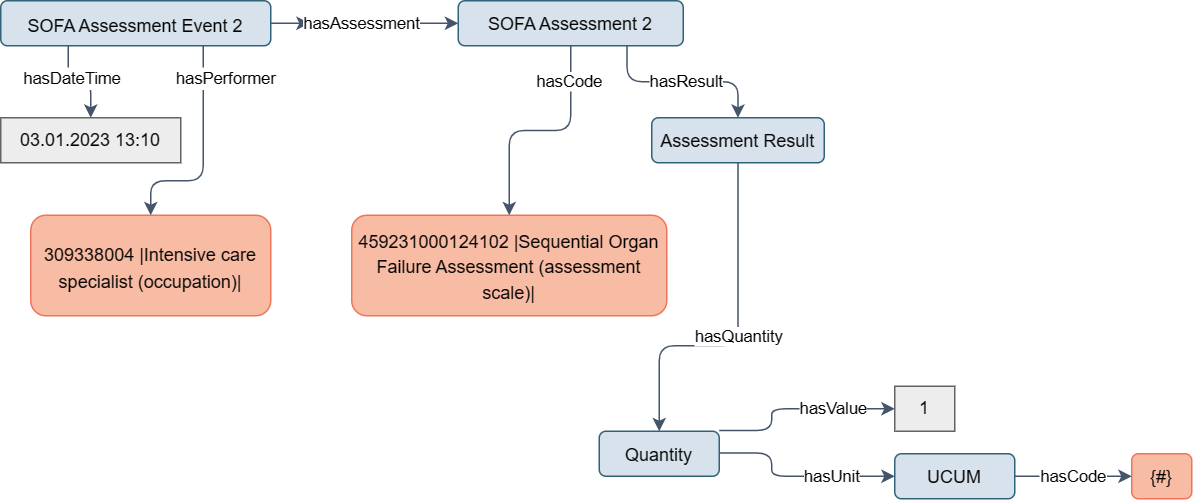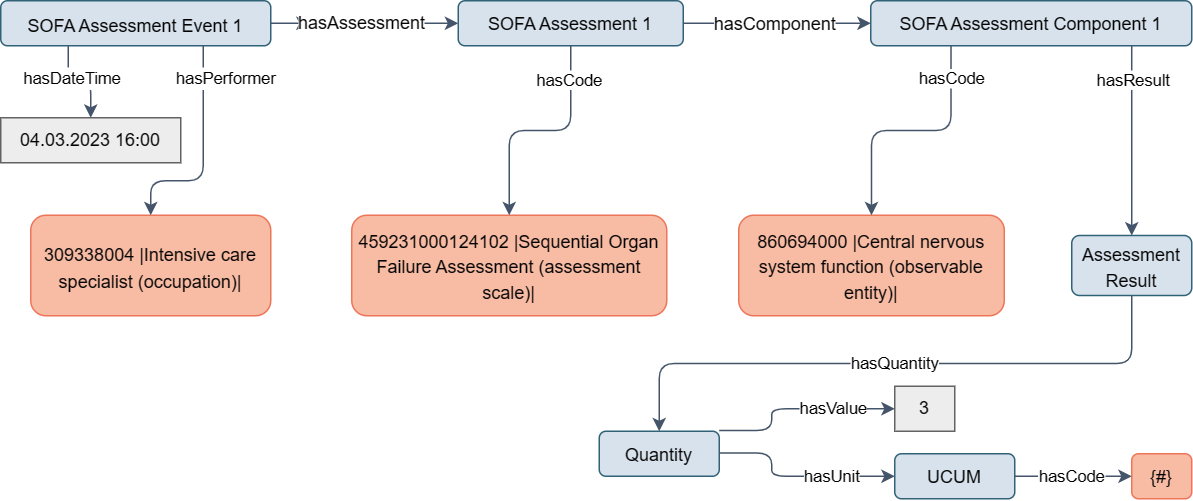Assessment concepts
The set of Assessment concepts enables the representation of evaluations that take into account a predefined scale, classification, staging or scoring system and their results.
Concept design
The concept design allows for sharing data about the assessment scale and the assessment result either as code or as free text (string) as well as sharing information about the type of person who performed the assessment.

Figure 1. Design of assessment data concepts.
Examples for data delivery
The Sequential Organ Failure Assessment (SOFA) and the corresponding result scores(s) can, for example, be instantiated with the assessment concepts. Figure 2 shows an example in which a SOFA total score of 1 is documented for a patient in the intensive care unit. The score was calculated on 3rd January 2023, 1:30 pm by an intensive care specialist.

Figure 2. Example of a SOFA total score.
Figure 3 shows an example in which a SOFA sub score for the central nervous system of 3 has been documented for a patient in the intensive care unit. The sub score was calculated on 4th March, 4:00 pm by an intensive care specialist.

Figure 3. Example of a SOFA sub score.
Guideline for data delivery
General
It is recommended to either request/provide the total score or the single sub scores depending on the granularity needed for the research question.
Assessment and Assessment Component
If SNOMED CT provides a code for the scale (staging system or classification), then the hasCode property should be populated with an instance of SNOMED CT code. If there is no SNOMED CT code available then the hasName property should be populated.
Assessment Result
Numeric results should be instantiated via AssessmentResult.hasQuantity (see examples in figure 2 and 3).
Non-numeric results should be instantiated as code if a code (from SNOMED CT or other resource) is available. Only if no code is available AssessmentResult.hasValueString should be instantiated.
If the result is a code, such as the SNOMED CT Apgar finding code (for the Apgar score assessment scale), use the most specific code reflecting the source data available, e.g. 169901001 | Apgar at 1 minute = 4 (finding) | is preferable over 275307002 | Apgar normal (finding) | (if temporal information is available). For an overview of preferred SNOMED CT codes, please check the Assessment concept documentation on the git (Addendum: Scores and Scales in SNOMED CT).
Example for semantic inheritance
The assessment concept design can be used to create specific assessment concepts that are required, for example, if value sets need to be limited (restrictions) or additional information needs to be expressed or linked. The representation of the tumor grades is such an example: the Tumor Grade Assessment Event concept has been created inheriting from the Assessment Event concept, and the Tumor Grade Assessment concept has been created inheriting from the Assessment concept. Figure 4 illustrates the inheritance as well as the associated restriction of the code in this example. Tumor Grade Assessment hasCode contains the following value set specification: descendant of: SNOMED CT 277457005 |Histological grading systems (staging scale)|, which is more restrictive than the value set of the more general concept of Assessment (descendant of: SNOMED CT 254291000 |Staging and scales (staging scale)|).

Figure 4. Example of tumor grade representation based on assessment concepts design.